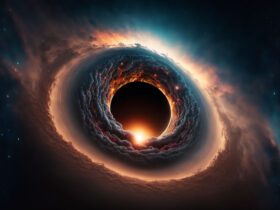It was around 66 million years back, when an asteroid crashed into Earth, causing a gigantic crater beneath the ocean and causing havoc on the globe.
Not the asteroid that killed out the dinosaurs, but rather a crater discovered 248 miles from the coastline of West Africa that formed during the same period. More research on the Nadir crater might change our understanding of that catastrophic period in Earth’s history.
An assistant professor from Edinburgh’s Heriot-Watt University discovered the crater by chance while sifting through seismic data collected for different research on the tectonic break separating South America and Africa. The crater is buried under 400 m of seabed silt.
He claimed that drilling into the crater and testing materials from the ground directly would be required to prove beyond a reasonable doubt that the crater was created by an asteroid collision. Scientists have found all the telltale signs of a crater, including the expected width-to-depth proportion, the correct elevation of the crater’s edges, and the proper elevation of the center uplift, or mound, formed by rock and silt driven upward by the shock force.
On Earth, there are less than 200 proven impact formations, with many more possibilities that haven’t been conclusively ruled out. The fact that it was an instance of a submerged impact crater, from which there are just a couple known, is the most noteworthy feature of this finding. Ocean collisions are the most frequent but the least well maintained or studied, so the chance to investigate an undersea impact site of this scale would be very valuable.
It is conceivable that the asteroid was a member of a longer-lived rain of asteroids that impacted Earth over a span of millions of years or more or that it was the consequence of the break-up of a parental asteroid close To Earth, with the individual shards distributed throughout a former orbit of Earth.
The study was published in Science Advances.















Leave a Reply